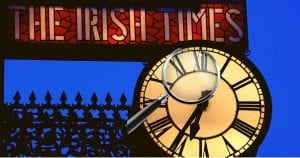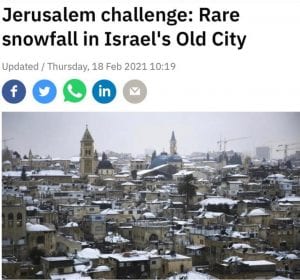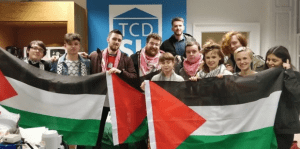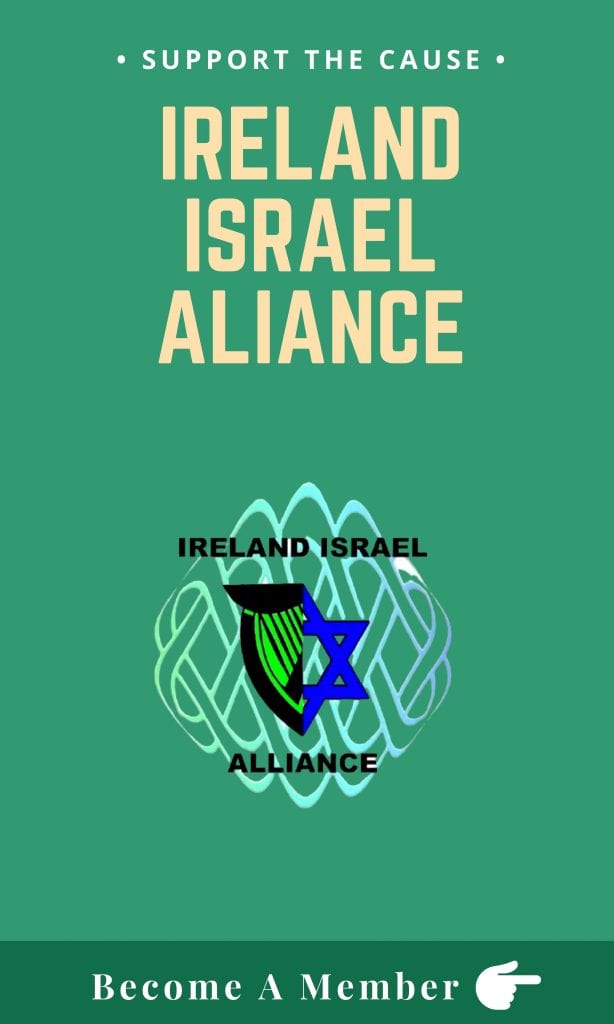Designed by a British officer a few decades ago, loathed by Hamas, and they’re almost exclusively cheap Chinese imports which Sinn Féiners seem to prefer to ones made by Palestinian workers.
The Palestinian keffiyeh (depicted below) is a black and white chequered scarf with a criss-cross black pattern on a white background. There is often a black border on all four sides of the scarf. Wearers may fold it diagonally and wrap it around their head with the folded centre line across their forehead before tucking the corners under the chin. Others use a similar folded arrangement but wrap it around their necks, letting the point of the triangle hang down at the back.
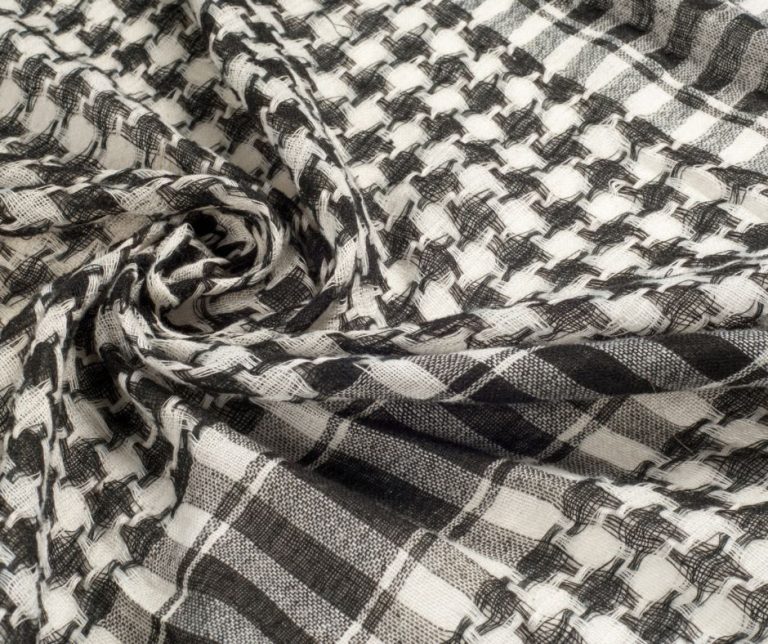
How many of its wearers know of its origins?
However it’s worn, it has become a major symbol of the Palestinian cause, possibly more important than the Palestinian flag given that it is also an item of clothing rather than just a political symbol. It’s often referred to as the “traditional Palestinian keffiyeh” but in fact there’s very little about it that’s traditionally Palestinian. Also it’s likely that few of its wearers know much about the origins (either historical or commercial) of the scarf that they are wearing or how representative it is of the people that now refer to themselves as “Palestinians”.
The keffiyeh – in and of itself – is not uniquely Palestinian. It’s worn by men all across the Middle East. It is often plain white but may also have other patterns in red, green or blue. What makes the modern day Palestinian keffiyeh distinctively Palestinian is the black and white chequered pattern. Distinctively Palestinian it might be but traditionally Palestinian it ain’t.
Designed by a British officer
The pattern was designed in the 1950s by a British officer called Sir John Bagot Glubb who was head of the Transjordanian Arab Legion from 1939 to 1956. Soldiers from what was then Transjordan (east of the Jordan river) wore a red and white keffiyeh and he wanted to distinguish them from Arabs who hailed from west of the Jordan. These latter soldiers were given keffiyehs with the black and white chequered design. So, the awkward truth is that the supposedly traditional Palestinian keffiyeh was designed by a Briton barely 70 years ago. Some might wonder if this is just one more example of the recentness of Palestinian identity.
Be that as it may, it was co-opted by Yasser Arafat along with the term “Palestine” as he set up his Palestine Liberation Organisation (PLO) in the early 1960s. As discussed before on this website, the PLO’s definition of Palestine has ebbed and flowed over the years but the keffiyeh has remained a symbol of the terror group and its Fatah faction.
Despised by Hamas
This leads us to another awkward fact. Fatah is now just one of two main Palestinian factions. Gaza is controlled by Hamas which is a bitter rival of Fatah and deeply suspicious of anyone who might have pro-Fatah leanings. Of course, in a brief war of extraordinarily vicious bloodletting in 2007, Hamas terrorists slaughtered scores of Fatah supporters in Gaza.
As described here, wearing a Palestinian keffiyeh under Hamas’s rule can get you arrested and severely beaten. Indeed, Gaza might be one of the most dangerous places in the world for wearing Palestinian keffiyehs.
Manufactured by the Chinese
So, there’s not much “Palestinian” about the origins, historicity or representativeness of Palestinian keffiyehs. What about where they’re made? Surely they’re at least of Palestinian commercial origin?
As it happens, they’re almost exclusively made in China these days. About 20 years ago, Chinese manufacturers noticed the popularity of the scarf, started manufacturing them in vast numbers and far more cheaply than Palestinians could. Now, there’s only one factory where Palestinians make keffiyehs. It’s the Herbawi factory in Hebron and production is only a fraction of what it used to be.
Where do Sinn Féiners source their keffiyehs?
On the Sinn Féin website, you can buy a “traditional black and white Palestinian keffiyeh” for 25 euro. Meanwhile, the Herbawi scarves (made by Palestinian workers in Hebron) retail at €35.95 on their Irish partner website AbuWear.
Sinn Féin did not become Ireland’s richest political party by selling stuff at a loss. So, it’s not unreasonable to wonder if when it comes to keffiyehs, Mary Lou’s party prefers cheap Chinese imitations to assisting Palestinian workers. Sinn Féin’s love affair with the People’s Republic and its regime is well documented on this website. They regularly mouth support for Palestine but it seems that their money goes to China. In any case, they’re probably far too busy boycotting Israeli businesses to have the time to help Palestinian ones.
By Ciarán Ó Raghallaigh.
Further Reading
- “Palestinian keffiyeh scarves – a controversial symbol of solidarity” – www.Reuters.com – 15-Dec-2023
- “Palestinian Arabs Violently Attacked For Wearing Keffiyehs…In Gaza” – www.IsraellyCool.com – 23-Sep-2021
- “Your Intifada: Now Made in China!” – www.MotherJones.com – 22-Jun-2009

